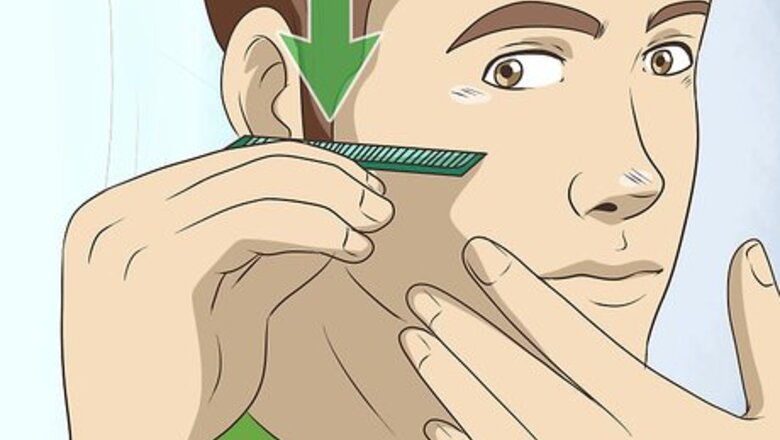
views
Straight Sideburns
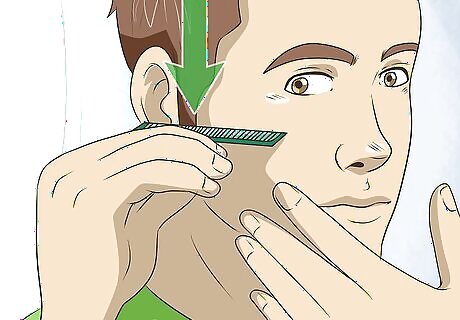
Comb your sideburns in the direction your hair grows. Use a fine-toothed comb to smooth and align your sideburns. Follow the grain of the hair. While that typically means combing downward, keep in mind sideburn hair angles slightly toward the ears for some people. Combing before cutting gives you the best perspective on your sideburns' length, thickness, and evenness. Additionally, running a comb through your hair will detangle it and make it easier to trim.
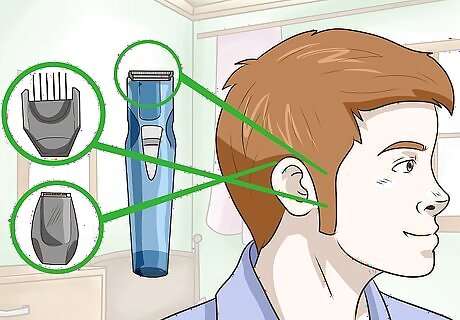
Choose a clipper guard that matches the surrounding hair length. Even if you want your sideburns to end up shorter than the hair above, start by clipping them to the same length. If you’re not sure which guard to use, try a higher numbered one, like #4 or #5. You can always trim more hair with a lower numbered guard, so it’s better to start with a higher number. Guards also usually have corresponding hair lengths marked on them, such as ⁄2 in (1.3 cm) for #4. You can measure the surrounding hair with a ruler to determine its length and choose the correct clipper guard. Clipper guards usually simply snap onto the end of the clippers.
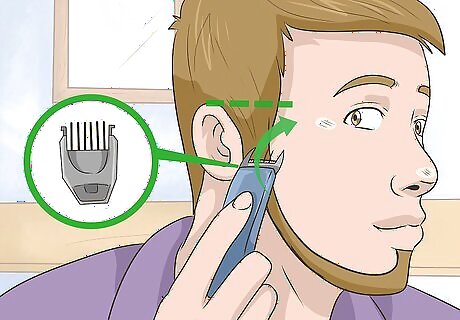
Clip from the bottom up to blend your sideburns evenly. Turn on the clippers and place the flat side of the guard against the back of your upper cheek. The tips of the guard’s teeth should be just below your sideburn. Glide the clippers upward then, once the teeth are roughly parallel with the top of your ear, angle the trimmer up and away from your face. Repeat this maneuver 2 or 3 times to make sure you don’t miss any stray hairs. If you have a longer hairstyle, pull the trimmer away when it's roughly in line with your ear canal instead of going to the top of the ear. You'll also need to take a few extra steps to part your hair and create sections to trim into sideburns. EXPERT TIP Nick Arrojo Nick Arrojo Master Hair Stylist Nick Arrojo is a Master Hair Stylist and the Owner and Founder of Arrojo NYC, an independent hairdressing brand. With over 35 years of experience, he specializes in cutting and styling hair using precision-based hairdressing and educating hair professionals through Arrojo Education. Nick has become a well-known icon in the hair industry with his internationally recognized razor-cutting technique, work with fashion designers, and seven years as TLC’s ‘What Not to Wear’ hairdressing host. Nick Arrojo Nick Arrojo Master Hair Stylist When shaping your sideburns, start by using trimmers to adjust the hair length. Then, shave around the sideburns leaving them larger than desired. Carefully reduce their size in small increments, frequently checking for symmetry by comparing them to facial features like your nose and mouth.
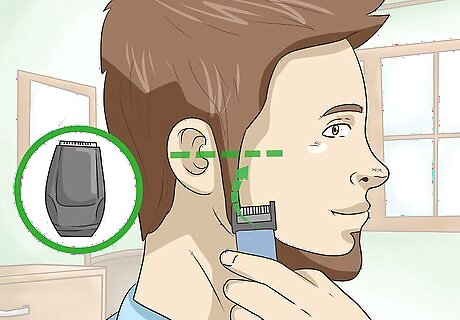
Fade the bottoms of your sideburns with a lower numbered guard. If you want to taper your sideburns, or make them shorter than the rest of your hair, switch to the next lowest numbered clipper guard (for instance, from #3 to #2). Make the same upward gliding motion, but stop in line with or just above your ear canal. That way, the upper portion of your sideburns above the ear canal will blend into the surrounding hair, while the lower portion will be thinner. Try to angle the clippers away slowly to create a seamless transition between hair lengths. If you’d like, you can create multiple taper lines for a more gradual fade. Divide your sideburns into thirds, and thin each third with next lowest guard (for instance, from #3 to #2 to #1).
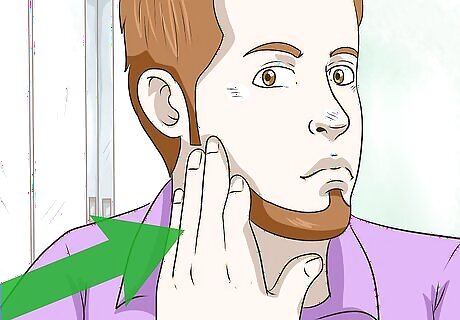
Use your fingers to trim your sideburns to even lengths. Look straight into the mirror with your head level and chin parallel to the floor. Place your index fingertips against both sideburns at the points where you want them to end. Then choose features on your face that line up with your desired sideburn length to keep track of where to cut. Using your ears as markers may seem like an obvious option, but most people have uneven ears. If you trim your sideburns to your earlobes, they may actually end up at slightly different lengths. If your face is round, keep your sideburns longer, or roughly in line with your earlobes, to elongate your features. If you have an oval face, trim your sideburns shorter, or about ⁄2 in (1.3 cm) above your earlobes, to balance your longer facial features.
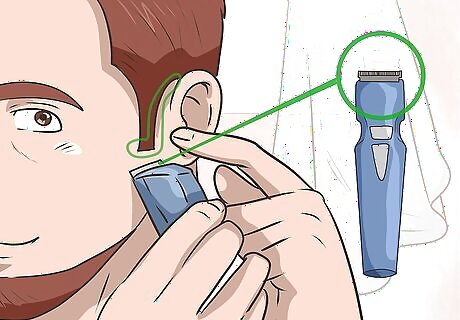
Shape the bottom edges and sides without a guard. Place the guardless trimmer against a sideburn at your desired length to define the bottom. Pull the clippers straight downward to create the bottom edge, then trim the other side. For a classic look, make the bottoms of your sideburns parallel to the ground. If you want to mix things up or accentuate the lines of your cheekbones, try angling them downward. If necessary, carefully shape your sideburns by trimming stray hairs along the sides. Hold the tops of your ears away from your head and pull your skin taut to reach the spots between your sideburns and ears.Variation: If you have a beard, blend your sideburns into it instead of trimming their bottom edges. You can cut your sideburns and beard to the same length, trim your beard to stubble, or clip your lower sideburns and beard at higher numbered guards to create a tapered transition.
Pointed Sideburns
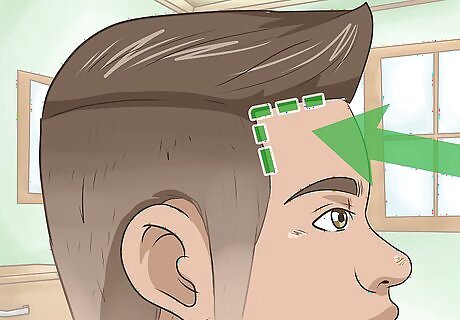
Clean up the sidelines at your temples if you have a lineup. A lineup is a haircut in which the hairline is sharply defined into straight sidelines at the temples and curved, C-shaped arches that frame the browline. Using a guardless razor, define the straight edges of your hairline that run from your temples toward your browline. If your hair is starting to grow out and you’re handy with clippers, you can also trim and fade the hair around your temples and neck. Use gradually lower numbered guards to taper your cut. For instance, trim hair around the temples to around 2 inches (5.1 cm) above the ear at #2, then switch to #1 for hair below that line. To blur out fade lines, angle the clippers so only the bottom third of the blade touches your head. If you’re not confident, just shape your lineup and sideburns and don’t worry about fading.
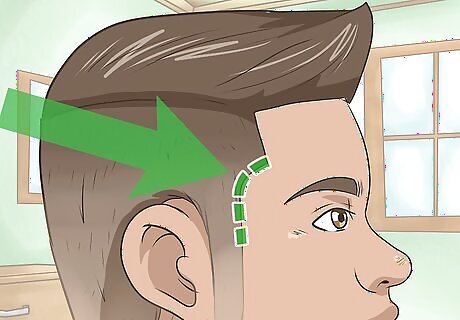
Create C-shaped arches from the sidelines toward your ears. Continue to shape your hairline and sideburns with a guardless trimmer. Begin the C-cut arch where your natural hairline curves back from above your browline toward your ear. If you can see where the barber shaped your C-cuts, follow those lines and trim hair that’s grown in since your last haircut. If you’re shaping a C-cut on your own, remove hair bit by bit to avoid making a mistake. Gradually shape your hairline from above your outer eyebrow to your sideburn in a defined curve. Look in the mirror and hold your head level and still to help keep your cut even. It’s also wise to use both a wall mirror and a hand mirror so you can see the sides and back of your head.
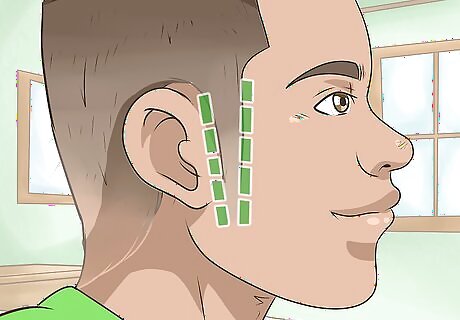
Shape your sideburns into gradually thinner lines. If you’re between haircuts and can see your barber’s lines, follow them to shape your sideburns. Otherwise, continue shaping the C-cut along your natural hairline to the back of your upper cheek. Trim the hair on both sides of your sideburn to shape it into a line that gets gradually thinner as it runs down toward your jaw. Remember to remove hair little by little to avoid making a mistake. If you have a detail trimmer or attachment, use it to carefully clip the hair around your ears.
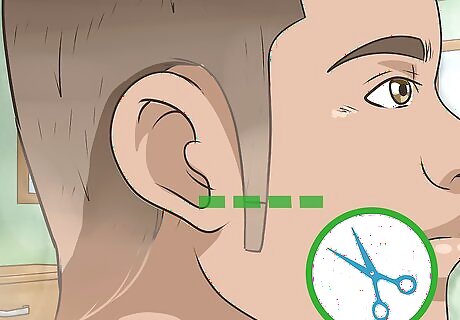
Trim your sideburns in line with or above your earlobes. Hold your head level, look in the mirror, and use your index fingers to mark where you want your sideburns to end. Pick features on your face that line up with your desired edges, then trim the bottoms of your sideburns. If you’re not sure how long you'd like your sideburns, start by cutting them longer, or roughly in line with your earlobes. If you want them shorter, trim them about ⁄2 inch (1.3 cm) above the earlobe. After adjusting a sideburn's length, you may need to trim carefully on each side to keep the point sharp and defined.
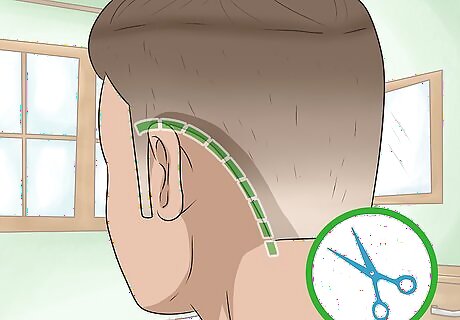
Touch up the hairline around your ears. After you’ve shaped your sideburns into points, hold the top of your ear away from your head and continue to clean up your hairline. Trim carefully and define the curve that runs around your ears into your pointed sideburns. If possible, touch up your hairline around the backs of your ears and neck, too.Tip: Use hand and wall mirrors so you can see the sides and back of your head. If you’re nervous about cleaning up your neckline, ask a helper to trim it for you.
Sideburns with Longer Hairstyles
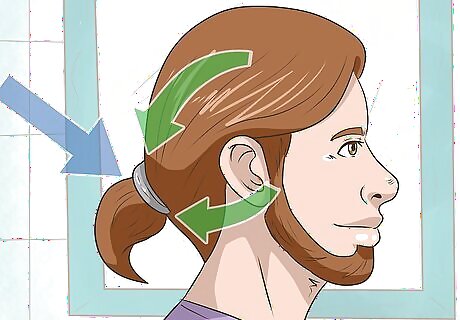
Part your hair where your ear meets your head. Use a fine-toothed comb to create a part in line with your ear. Comb back hair above that line that’s long enough to pull behind your ear, then brush the hair below the part downward toward your jawline. The hair below the part that’s too short to pull behind your ear is what you’ll trim into a sideburn.
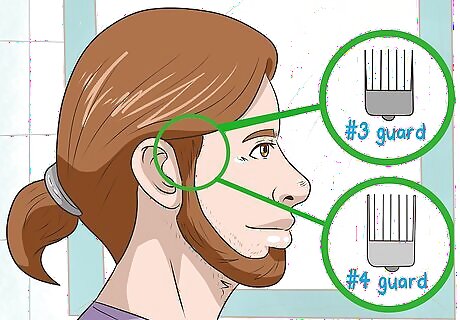
Trim your sideburns with clippers fitted with a #3 or #4 guard. The right guard size depends on your desired length, but using a #3 or #4, or ⁄8 to ⁄2 inch (0.95 to 1.27 cm), is a good start. Hold the hair above the part behind your ear as you thin out your sideburn with the trimmer. Press the trimmer to the bottom of the sideburn, move it upward toward the part, then angle it up and away from your face. Stop just before you get to the part so you don’t accidentally clip longer layers of hair.
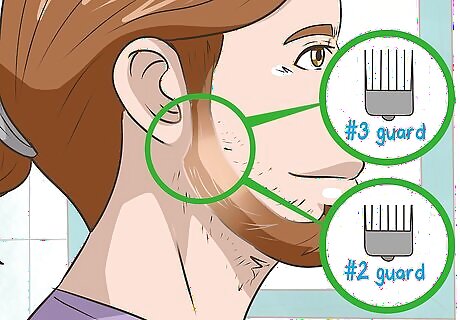
Switch to a #2 or #3 guard for the bottom half if you want a faded look. If you want your sideburns shorter or tapered, fit your clippers with a guard 1 size lower than the one you used first. For a gradual fade, pass the trimmer over the lower half or third of each sideburn. If you want to try a more dramatic look, you could also gradually fade your sideburns from a #2 to #1 or trim them entirely with a #1.
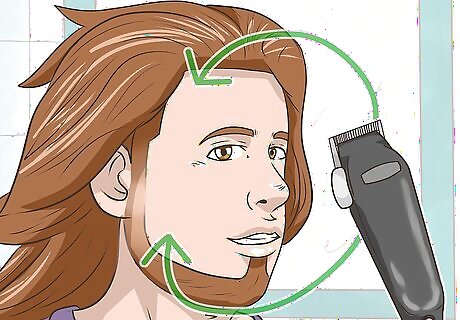
Finish shaping your hairline with guardless clippers. After you’ve thinned out your sideburns, define their bottom edges or blend them into your beard, if you have one. Then clean up stray hair around your cheeks and between your sideburns and ears.Tip: If you also need to clean up your neckline, pull the hair on the back of your head up, hold it tightly, and trim the hair that’s too short to gather. Follow your natural hairline to clean things up without creating a straight line, which could jar with longer hairstyles.




















Comments
0 comment